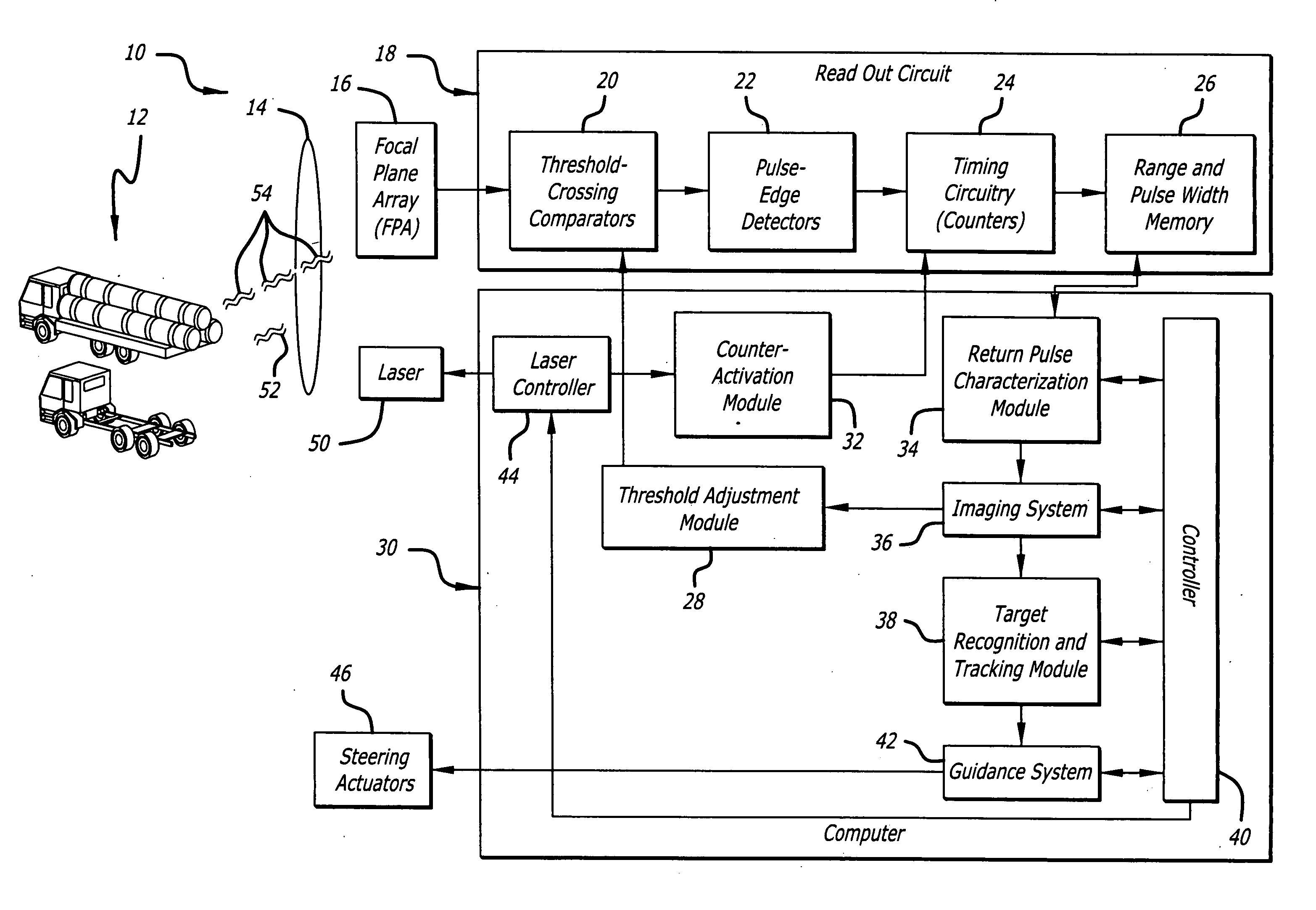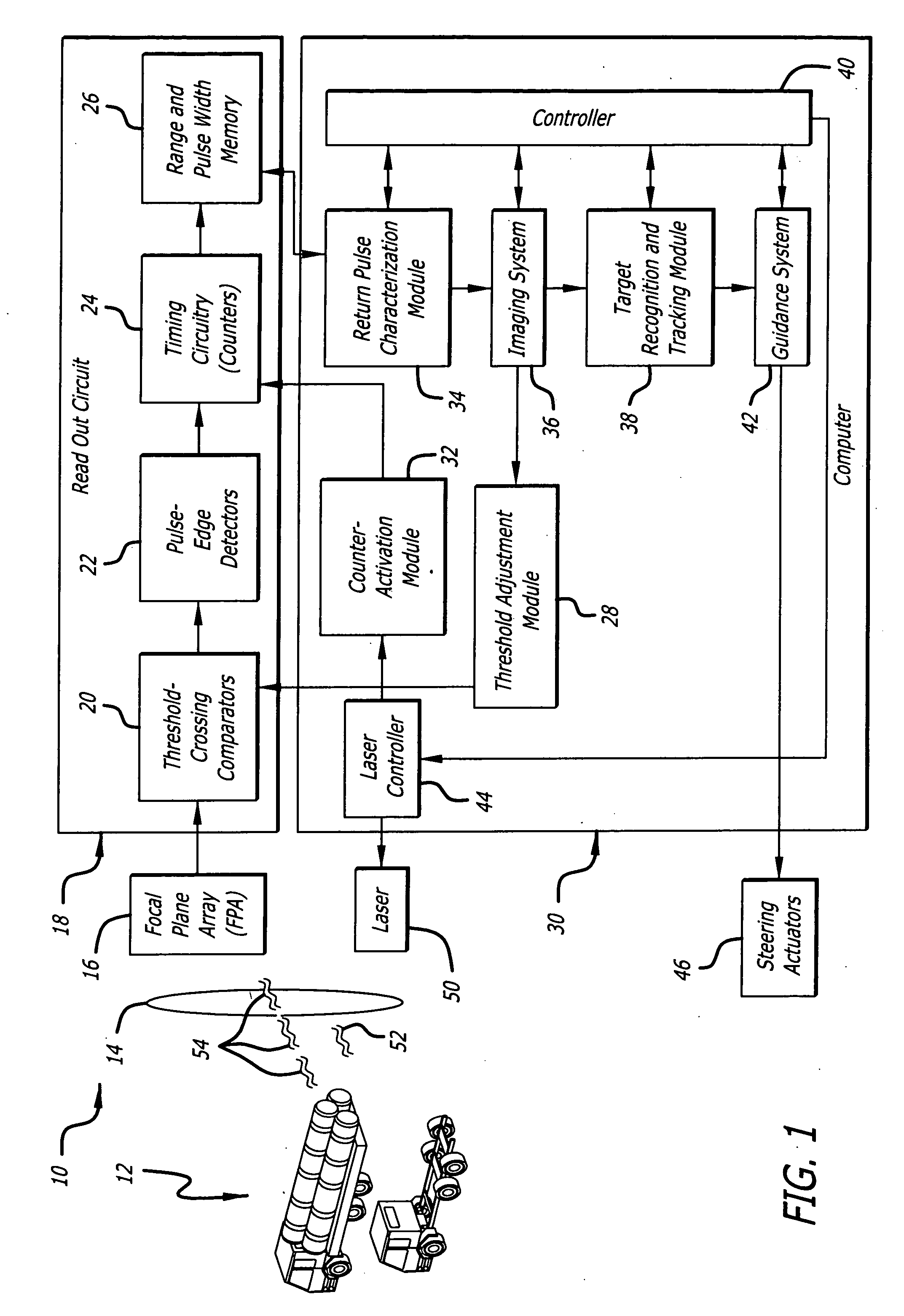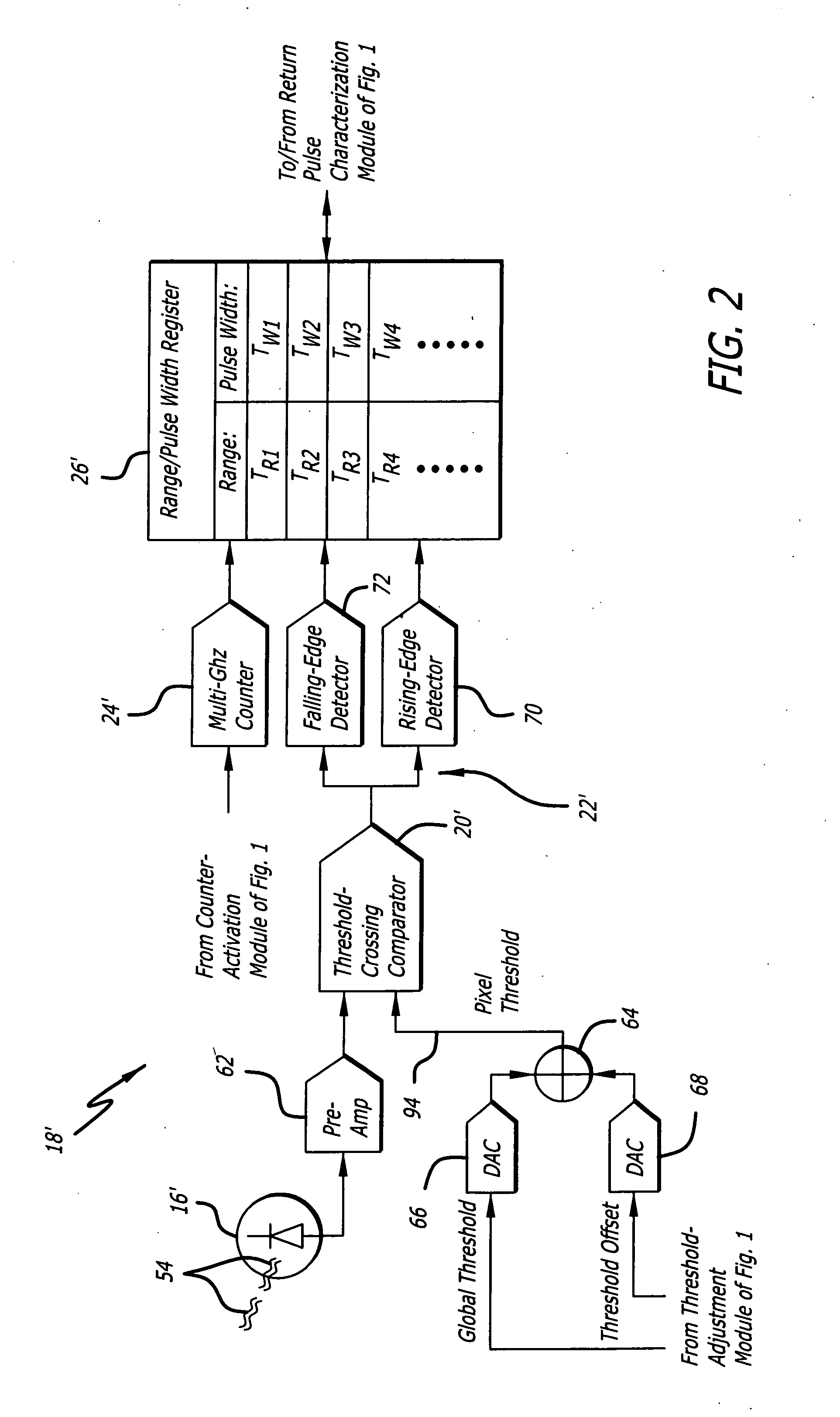High-speed readout circuit and system incorporating same
a high-speed readout and readout circuit technology, applied in the field ofsignal processing, can solve the problems of limited dynamic range, impractical wide-bandwidth circuit approach, and severe compromise of ladar system imaging capabilities in accuracy and range resolution, and achieve the effects of minimizing digital noise interference, minimizing noise interference, and introducing new designs
- Summary
- Abstract
- Description
- Claims
- Application Information
AI Technical Summary
Benefits of technology
Problems solved by technology
Method used
Image
Examples
Embodiment Construction
[0025] While the present invention is described herein with reference to illustrative embodiments for particular applications, it should be understood that the invention is not limited thereto. Those having ordinary skill in the art and access to the teachings provided herein will recognize additional modifications, applications, and embodiments within the scope thereof and additional fields in which the present invention would be of significant utility.
[0026]FIG. 1 is a diagram of a ladar system 10 employing a unique readout circuit 18 according to an embodiment of the present invention. For clarity, various components, such as power supplies, local oscillators, integrated circuit chips, and so on have been omitted from the figures. However, those skilled in the art with access to the present teachings will know which components to implement and how to implement them to meet the needs of a given application.
[0027] In the present embodiment, the system 10 is aimed at a scene 12 an...
PUM
 Login to View More
Login to View More Abstract
Description
Claims
Application Information
 Login to View More
Login to View More - R&D
- Intellectual Property
- Life Sciences
- Materials
- Tech Scout
- Unparalleled Data Quality
- Higher Quality Content
- 60% Fewer Hallucinations
Browse by: Latest US Patents, China's latest patents, Technical Efficacy Thesaurus, Application Domain, Technology Topic, Popular Technical Reports.
© 2025 PatSnap. All rights reserved.Legal|Privacy policy|Modern Slavery Act Transparency Statement|Sitemap|About US| Contact US: help@patsnap.com



